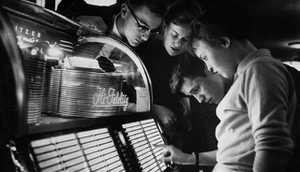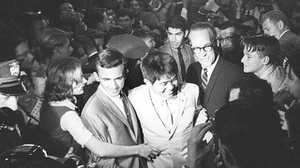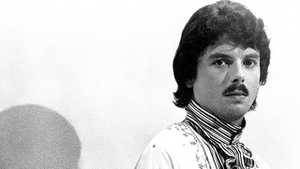Easy listening for a summer that was anything but.
By Nate Chinen
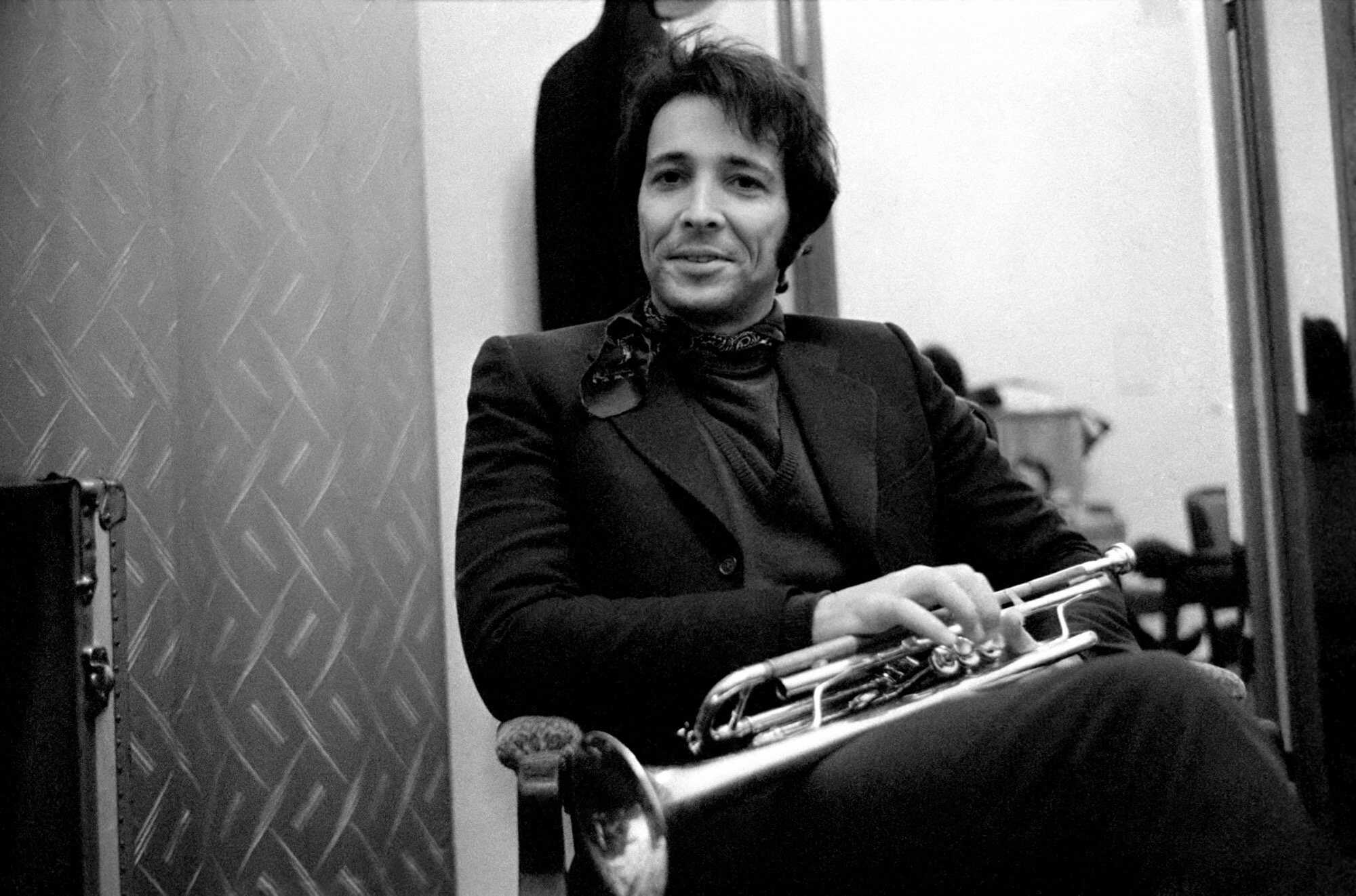
Some songs perfectly capture their moment: the cultural climate, the social fabric, the national mood. We’re not here to talk about one of those songs.
We’re here to talk about “This Guy’s in Love With You,” Herb Alpert’s 1968 hit summer single. It topped the chart on June 22, and held that spot for four weeks — delivering the first number one single for its savvy songwriters, Burt Bacharach and Hal David, as well as for Alpert, the trumpet-playing leader of the Tijuana Brass. Alpert played a little trumpet on the track, but mostly he sang, evincing a vocal ability perhaps best described as “serviceable.” Somehow that wasn’t the flukiest thing about the song’s phenomenal success.
Picture the summer of ’68. The world is roiling with conflict: student protests in France, The Troubles in Northern Ireland, civil unrest in South America. The ongoing Tet Offensive in Vietnam. Back in the States, campus buildings are being occupied, and major cities are on edge following riots sparked by the assassination of Martin Luther King, Jr. On June 5, presidential hopeful Robert F. Kennedy is shot in Los Angeles, just after a speech celebrating his win in the California democratic primary.
Scroll down the Top 10 summer hits of ‘68, and you’ll find several in tune with the convulsions of a youthful and insurgent age — like Steppenwolf’s anthem “Born to Be Wild,” which would soon fulfill its destiny in Easy Rider, and The Rolling Stones’ post-psychedelic stunner “Jumpin’ Jack Flash,” full of complaints in the form of boasts. Then there’s “People Got to Be Free” by The Rascals, which is almost too on the nose: “All the world over, so easy to see / People everywhere just wanna be free.”
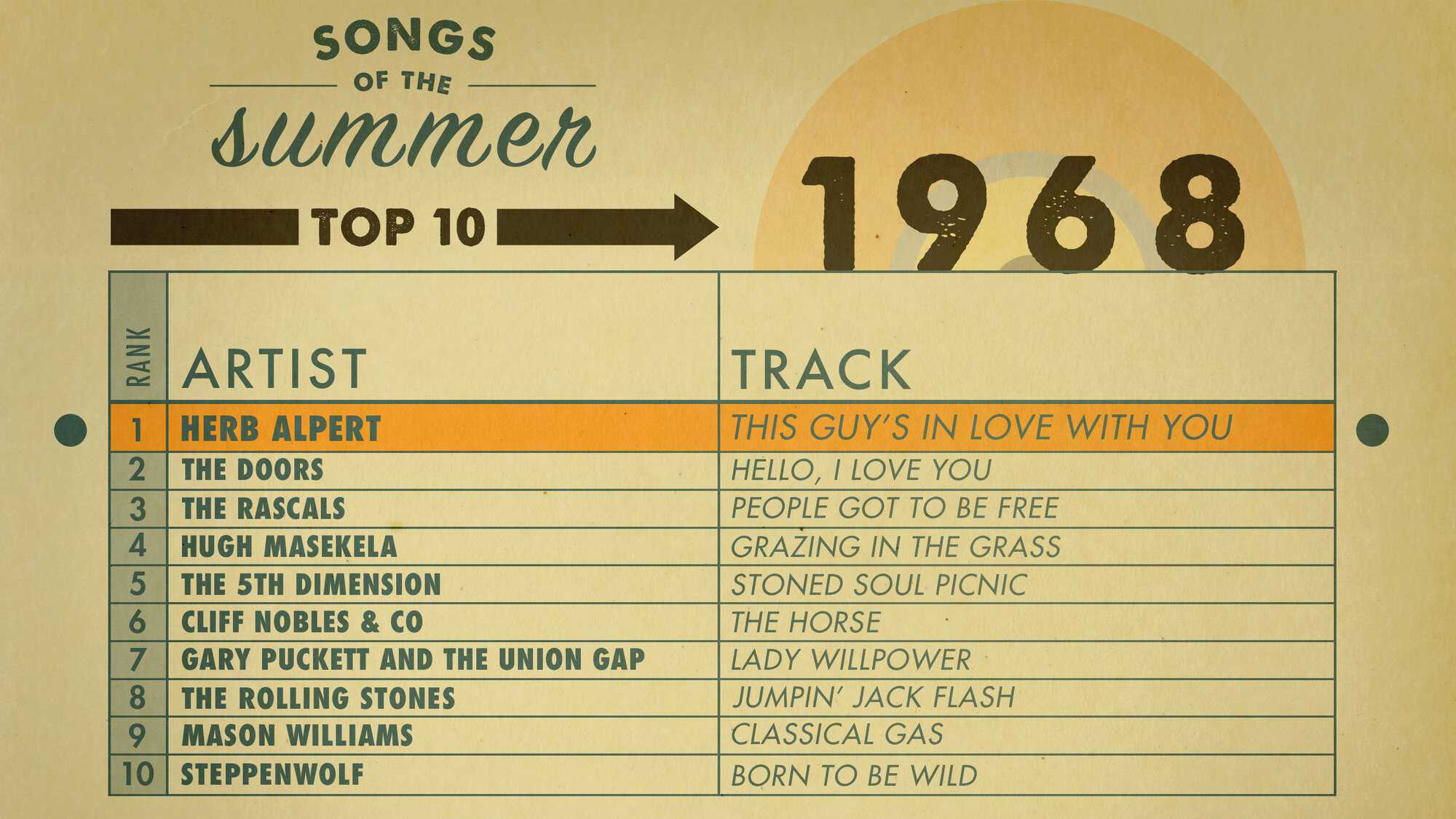
So now here’s Herb. “You see, this guy,” he sings, scooping into his notes. “This guy's in love with you.” A pitter-patter of electric piano over a moseying-cowpoke beat. An orchestra, hovering. As declarations of ardor go, it feels about as urgent as someone wondering aloud whether to order the Riesling or the Chardonnay. How is this happening? What’s with This Guy?
People knew Alpert well by 1968. A lifelong Angeleno, he had broken into the record industry as a pop songwriter, producing hits for the likes of Jan and Dean. (He’d actually also had some previous vocal success — as Dore Alpert, with a novelty hit called “Tell It To the Birds.”)
While leading the Tijuana Brass, an instrumental pop band that merged studio precision with mariachi flair, Alpert had a string of hits beginning with “The Lonely Bull (El Solo Toro),” which went to number six in ’62. Alpert released that song on the label he’d founded with Jerry Moss, A&M Records.
A&M would become a powerhouse, signing everyone from The Carpenters to Sheryl Crow. But one of its early standouts was a Tijuana Brass album called Whipped Cream & Other Delights, which went to number one in ’65 with a risqué, instantly iconic cover image. Alpert and his band held onto pop dominance: for the next few years, rarely a week passed when there wasn’t at least one Tijuana Brass album in the Top 10. (In ’66, they famously outsold The Beatles.) Instrumental pop hits were far more common then: in fact, “This Guy’s in Love With You” yielded its number one spot to one such song, Hugh Masekela’s “Grazing in the Grass.”
CBS produced several television specials featuring Alpert and the Tijuana Brass, each one a ratings success. The Beat of the Brass, which aired in April of 1968, was the most ambitious: it showed the band in a range of locales, including New Orleans and Ellis Island, and received gobs of advance coverage in the entertainment press. Alpert, sensing the need for a strong closing number, reached out to a songwriter on the A&M roster for help.
“We were fishing around for something different to do on our television special and I asked Burt Bacharach if he would have time to write a song for me,” he told the Los Angeles Times in ’68. “A couple of weeks later he sat down at the piano and sang ‘This Guy’s in Love With You.’ I flipped out. I said this would be a hit if my mother sang it!”
Over the years, Alpert has occasionally claimed that “This Guy’s in Love With You” was a song rescued from Bacharach’s slush pile, but this account makes it clear that it was made to order. (Bacharach’s own recollections corroborate this version of the tale.) What everyone agrees on is the beguiling charm of the song, which follows a surprising melodic arc from the end of the first eight bars. The craftsmanship is such that a simple theme turns out to be anything but.
Similarly, the nature of the song’s debut, via The Beat of the Brass, undeniably shaped its reception. Have a look at the clip from the CBS special, which you could easily argue amounts to a proto music video. Filmed around the hills of Santa Monica, it’s an idyllic portrait of young romance featuring Alpert and his first wife, Sharon Mae Lubin, who sports bangs, a diffident smile, and a truly impressive amount of mascara.
Did you catch Alpert’s voiceover introduction for the song? He talks about growing up in California, and the fact that he has his home there. “And I guess the feeling any family has when it’s together is really the most important part of the beat of America, or any other country,” he says, as his wife is seen walking slowly across the frame. “It’s a personal beat, one you can’t tap your foot to, but one that lets you keep perfect time.”
That emphasis on home and hearth runs counter to the intrinsic message of the song. “This Guy’s in Love With You” isn’t about the faithful tending of a marital flame — it’s a courtship pitch, rendered sweetly but with no shortage of unrequited yearning. (“My hands are shaking,” etc.) If the slick production makes it sound like a commercial, maybe it is. But in the television special, what it’s selling has shifted — from quivering seduction to something more idealized and wholesome. The final shot depicts a kiss on a beach at sunset: Happily Ever After.
It’s not hard to see how this presentation of the song might resonate, at a time of upheaval and chaos. After The Beat of the Brass was broadcast in late April, a clamor arose for the song to be released as a single. Alpert rush-recorded it. After its success as a summer single, it appeared on the next Tijuana Brass album, also titled The Beat of the Brass.
“This Guy’s in Love With You” would go on to have a life independent of Alpert, becoming a vehicle for singers of every station and level of stature. Dionne Warwick switched the gender pronouns and took the song to number seven in ‘69. Aretha Franklin made it the title track and centerpiece of a 1970 Atlantic album, replacing Alpert’s hopeful vulnerability with oozing, imperious soul.
More recently, the song has become a kind of winking signifier, not quite camp but something close. Perhaps you’ve seen Faith No More performing it in the studio for the BBC. Maybe you’re familiar with the version recorded by Mac DeMarco. These are affectionate ribbings, self-conscious about the song’s saccharine qualities but respectful of its solid construction.
Alpert was hardly defined by his most visible turn in the hit parade: through his label and business dealings, he became one of the wealthiest musicians on the planet, and one of the most impactful philanthropists in the arts. He’s now 82, with a new album on the horizon.
Its lead single is a version of “Michelle,” by The Beatles, which he passed on signing to A&M back in the day. Featuring a judicious swell of strings, the reverby twang of a guitar, and a clop-clopping rhythmic cadence much like the one on “This Guy’s in Love With You,” it’s easy listening in every sense of that term. Could it become a surprise hit, during our own summer of madness? That outcome is unlikely, but as Alpert could attest, you never know.
Listen to the complete top ten from the summer of 1968 on Spotify.

Nate Chinen is the Director of Editorial Content for WBGO, in partnership with NPR Music. He was previously a jazz and pop critic for The New York Times and a columnist for JazzTimes. A ten-time winner of the Helen Dance-Robert Palmer Award for Excellence in Writing, presented by the Jazz Journalists Association, he has also received that organization’s award for Best Book About Jazz, for coauthoring the 2003 autobiography of impresario George Wein, Myself Among Others: A Life in Music. Chinen is working on another book now, about jazz in our time.
ROLL DOWN THE WINDOWS, TURN UP THE VOLUME AND PREPARE TO SING ALONG AS AMERICAN EXPERIENCE CELEBRATES THE MUSIC OF THE SEASON WITH SONGS OF THE SUMMER.
IN 1958, BILLBOARD LAUNCHED ITS HOT 100, CHRONICLING THE SONGS THAT WERE FLYING OFF RECORD STORE SHELVES, PLAYING NON-STOP ON JUKE BOXES, AND BLARING THROUGH RADIO SPEAKERS. ALMOST SIXTY YEARS ON, HOW WE LISTEN TO MUSIC AND HOW WE TRACK A SONG’S SUCCESS MAY HAVE CHANGED, BUT MUSIC REMAINS A POWERFUL FORCE IN OUR CULTURE. EVERY FRIDAY FROM JUNE 2 THROUGH AUGUST 25, WE’LL REVEAL ONE ICONIC SONG THAT HIT THE CHARTS, ACCOMPANIED BY COMMENTARY FROM SOME OF OUR FAVORITE MUSIC WRITERS. EXPLORE OUR HISTORICAL MIXTAPE, AND CHECK BACK EACH FRIDAY FOR OUR NEXT TRACK.
Published June 23, 2017.




